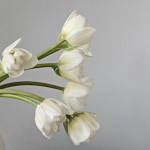Blog
Welcome

This is the blog for professional photographers, and those who aspire to be. Our aim is to help professional photographers build long-term, sustainable careers.
loading facebook page
Recent posts
 I got a few pats on the back for my "check your files" post. Chris Meiklejohn, our lab manager, liked it so much that she wanted a sequel. In fact she wrote one! The funny thing was my team mates had already got me one started on a follow-up, and the things on Chris' list were pretty much the same as ours.
So, drum roll…
(If you like this, I wrote it. Otherwise, it's Chris!)
8 ways to better print files
Would you love to have your albums arrive on your doorstep faster, hassle-free, and beautifully printed?
You put a lot of work into them, so they might as well be perfect. We definitely want to give you the best possible print job, because if there are problems with your files, you can guarantee your clients will see them.
By carefully checking for these eight issues before you send your files you'll avoid maybe 90% of the issues we see.
1. Tell us if you've used an effect (a vintage look for example). These can throw us if we're doing full colour service for you, especially if the effect is subtle. Our "default setting" is to go for a consistent, accurate colour rendition. If you let us know you've used an "effect", there's no risk of us trying to bring your file back to "natural"! Jot down a note on the order ("Dear QBY, effects used on layouts 2 & 5").
2. Check for "banding". If you’ve put vignettes on images, or burnt in the sky, take a moment to check the files at 100% for “banding”. Reducing the feathering on the vignette often helps, or adding a small amount of noise to the layer. Unfortunately banding sometimes doesn't show up until we print, but you'll find most of it.
("Banding" is a hard distinction between one colour and the next in an image. It's particularly obvious when you have graduated colour such as in vignettes, or a dark blue sky graduating to a lighter sky. Another example (and this is very hard to pick on a file) is in clouds. (Here's a hint: If you open a file in Photoshop and then select Image > Adjust > Equalize, the banding will show up. Don't freak, as this takes your image to an extreme but will highlight my point). Banding tends to occur more with images set as SRGB and JPEG.)
3. Check for sensor dust (those annoying small dark spots). There's nothing worse than having a beautiful blue sky and sensor dust in the middle of it. It's really common and when we query it, some people say to forget about it, its ok. I disagree! People are paying you for these images, and if we've spotted it, your client will too. I think in some cases this boils down to the cost of fixing the problem. If you check your files that becomes a non-issue.
4. If possible, avoid soft images. OK, lets be honest, we mean out-of-focus images, but we're being nice! If you can see the eyes aren't sharp, for example, the odds are it will print up like that. We know that sometimes you need to use an image that is not pin sharp, but we suggest that, if possible, you cull soft images before showing the client.
5. Check for pixelation. Generally if you see pixelation in your image at 100% then it will show up in your print. I say generally because this is not an exact science. If for example, if the image is small then it may be ok, but at least you are aware of it.
6. Look for noise (as opposed to pixelation). Noise in shadow areas is quite common, particularly when images have had a lot of work done on them: the file has lost information and is trying to compensate.
7. Check your image alignment. On matted albums you have to go back in to Photojunction and align using the tools in the program, or select the option for us to align for you. You can fix up the alignment in flushmount layouts in Photoshop as long as you have exported PSD files, although we think it's easier in PJ.
8. Double-check your artwork. There are two things to look for here. First, make sure that there really are no red eyes, stray hairs or other things to fix. But also check to make sure the images you have artworked are correct! We see some interesting examples where work has been done and problems missed. Extra heads and hands … eyes appearing in space or on different parts of people's bodies. I would love to show you some stuff, because it can be quite funny, but the boss gave me the big thumbs down on that one. Sometimes artwork problems are not obvious to us, simply because people have artworked one set of images and sent us another. It happens occasionally.
That's it.
An album of images is a big job and it's easy to make mistakes. Everybody does from time to time, and it helps to know where to look for them. You and your clients deserve the best possible result and it's our job to help you get it.
By the way, if you know an image is a bit dodgy, but it's the best you can do, tell us. And if you don’t want us to query any issues we do happen to notice (or maybe you just want us to fix them without asking), let us know that too.
There you go! Check your files, get a better result and save some time and money.
Cheers, Pete and Chris
I got a few pats on the back for my "check your files" post. Chris Meiklejohn, our lab manager, liked it so much that she wanted a sequel. In fact she wrote one! The funny thing was my team mates had already got me one started on a follow-up, and the things on Chris' list were pretty much the same as ours.
So, drum roll…
(If you like this, I wrote it. Otherwise, it's Chris!)
8 ways to better print files
Would you love to have your albums arrive on your doorstep faster, hassle-free, and beautifully printed?
You put a lot of work into them, so they might as well be perfect. We definitely want to give you the best possible print job, because if there are problems with your files, you can guarantee your clients will see them.
By carefully checking for these eight issues before you send your files you'll avoid maybe 90% of the issues we see.
1. Tell us if you've used an effect (a vintage look for example). These can throw us if we're doing full colour service for you, especially if the effect is subtle. Our "default setting" is to go for a consistent, accurate colour rendition. If you let us know you've used an "effect", there's no risk of us trying to bring your file back to "natural"! Jot down a note on the order ("Dear QBY, effects used on layouts 2 & 5").
2. Check for "banding". If you’ve put vignettes on images, or burnt in the sky, take a moment to check the files at 100% for “banding”. Reducing the feathering on the vignette often helps, or adding a small amount of noise to the layer. Unfortunately banding sometimes doesn't show up until we print, but you'll find most of it.
("Banding" is a hard distinction between one colour and the next in an image. It's particularly obvious when you have graduated colour such as in vignettes, or a dark blue sky graduating to a lighter sky. Another example (and this is very hard to pick on a file) is in clouds. (Here's a hint: If you open a file in Photoshop and then select Image > Adjust > Equalize, the banding will show up. Don't freak, as this takes your image to an extreme but will highlight my point). Banding tends to occur more with images set as SRGB and JPEG.)
3. Check for sensor dust (those annoying small dark spots). There's nothing worse than having a beautiful blue sky and sensor dust in the middle of it. It's really common and when we query it, some people say to forget about it, its ok. I disagree! People are paying you for these images, and if we've spotted it, your client will too. I think in some cases this boils down to the cost of fixing the problem. If you check your files that becomes a non-issue.
4. If possible, avoid soft images. OK, lets be honest, we mean out-of-focus images, but we're being nice! If you can see the eyes aren't sharp, for example, the odds are it will print up like that. We know that sometimes you need to use an image that is not pin sharp, but we suggest that, if possible, you cull soft images before showing the client.
5. Check for pixelation. Generally if you see pixelation in your image at 100% then it will show up in your print. I say generally because this is not an exact science. If for example, if the image is small then it may be ok, but at least you are aware of it.
6. Look for noise (as opposed to pixelation). Noise in shadow areas is quite common, particularly when images have had a lot of work done on them: the file has lost information and is trying to compensate.
7. Check your image alignment. On matted albums you have to go back in to Photojunction and align using the tools in the program, or select the option for us to align for you. You can fix up the alignment in flushmount layouts in Photoshop as long as you have exported PSD files, although we think it's easier in PJ.
8. Double-check your artwork. There are two things to look for here. First, make sure that there really are no red eyes, stray hairs or other things to fix. But also check to make sure the images you have artworked are correct! We see some interesting examples where work has been done and problems missed. Extra heads and hands … eyes appearing in space or on different parts of people's bodies. I would love to show you some stuff, because it can be quite funny, but the boss gave me the big thumbs down on that one. Sometimes artwork problems are not obvious to us, simply because people have artworked one set of images and sent us another. It happens occasionally.
That's it.
An album of images is a big job and it's easy to make mistakes. Everybody does from time to time, and it helps to know where to look for them. You and your clients deserve the best possible result and it's our job to help you get it.
By the way, if you know an image is a bit dodgy, but it's the best you can do, tell us. And if you don’t want us to query any issues we do happen to notice (or maybe you just want us to fix them without asking), let us know that too.
There you go! Check your files, get a better result and save some time and money.
Cheers, Pete and Chris


Email: info@queensberry.com
Free Phone Numbers:
New Zealand: 0800 905 905
Australia: 1800 146 251
USA: +18668350851
UK: 0800 808 5271
Canada: +1 855 581 0370